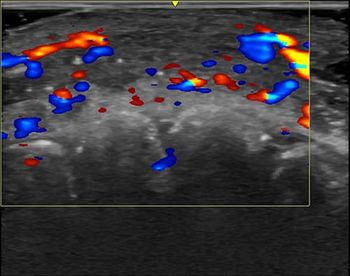
HBOC to buy Imnet systems in move to bolster EPR offering
HBOC to buy Imnet systems in move to bolster EPR offeringImpact of deal on Imnet's OEM deals is still unknownThe intriguing story of Imnet Systems in the PACS market appears to be coming to a close, at least in its role as an independent
HBOC to buy Imnet systems in move to bolster EPR offering
Impact of deal on Imnet's OEM deals is still unknown
The intriguing story of Imnet Systems in the PACS market appears to be coming to a close, at least in its role as an independent company. The Alpharetta, GA-based healthcare information systems and PACS developer will be purchased by information system giant HBO & Company.
The acquisition, which is subject to regulatory and Imnet shareholder approval, is expected to close during the fourth quarter of 1998. Imnet shareholders would receive 0.84 a share of HBOC common stock for each Imnet share held, subject to certain adjustments.
Atlanta-based HBOC and Imnet have been partners since 1996, and HBOC has privately labeled Imnet's Electronic Information Warehouse, which includes the MedVision PACS offering, as part of its Pathways Image Manager document and medical image management system. In its press release, HBOC emphasized Imnet's expertise in electronic information and document management as reasons for the acquisition. Beyond their respective press releases, the two companies had no further comment on the deal.
For some market watchers, the announcement came as no surprise. HBOC has a history of acquiring companies it has partnered with, said Benjamin Rooks, an equity research analyst at investment firm CIBC Oppenheimer.
"In my mind, it was always a question of when, not if," he said.
Imnet made a splash at the 1996 Radiological Society of North America meeting, where it marketed its MedVision PACS product as an "infoPACS" solution, in which PACS was integrated into an enterprise-wide information system. MedVision was based on display software acquired from Evergreen Technologies, which lacked the robustness required for diagnostic review. In order to rectify this and other shortcomings, Imnet in 1997 entered into a value-added reseller agreement with ISG Technologies to use that Canadian company's viewing software, as well as basic
teleradiology software. Access Radiology also contributes its wavelet compression technique as well as other components of the Lexington, MA-based firm's Framewave teleradiology offering.
Later in the year, Imnet was plagued by delays in the release of its financial statements to allow its auditor additional time to respond to a confidential informal inquiry from the Securities and Exchange Commission (PNN 10/97). Some industry analysts believe that the inquiry may have caused customers to delay purchasing Imnet products.
Today, teleradiology versions of MedVision have been installed at several sites. However, to date Imnet has not installed its PACS as part of its Electronic Information Warehouse (EIW) at any sites, although one site is nearing completion, according to a company spokesperson.
In addition to direct sales, Imnet has pursued an OEM distribution model for its products, including MedVision. It will be interesting to see what kind of impact the HBOC acquisition of Imnet has upon the existing OEM relationships Imnet maintains with HBOC competitors, including Cerner, CompuCare, HealthVision, Phamis, and IDX Systems.
It seems clear, however, that the agreement will benefit only Imnet. With potential customers looking to acquire healthcare information technology offerings from strong vendors, any doubt about the company's long-term viability will be removed with its association with HBOC.
"I think it should be a nice fit," said Stephen Shook, a research analyst at investment firm Interstate/Johnson Lane.
Meanwhile, Imnet is showing improvement in its business. The company posted record revenues of $17.4 million in its fourth quarter (end-June), a 9.7% improvement over the $15.9 million posted during the same period in 1997. The company also had net income of $1.9 million, compared with income of $2.9 million last year.
During the period, Imnet also had record numbers of new orders.
For the fiscal year, revenue was $54.6 million, up 8.9% compared with the $50.2 million reported in 1997. The company was hit by a $903,000 loss, compared with net income of $7.1 million last year.
Search again Homepage
Newsletter
Stay at the forefront of radiology with the Diagnostic Imaging newsletter, delivering the latest news, clinical insights, and imaging advancements for today’s radiologists.




























